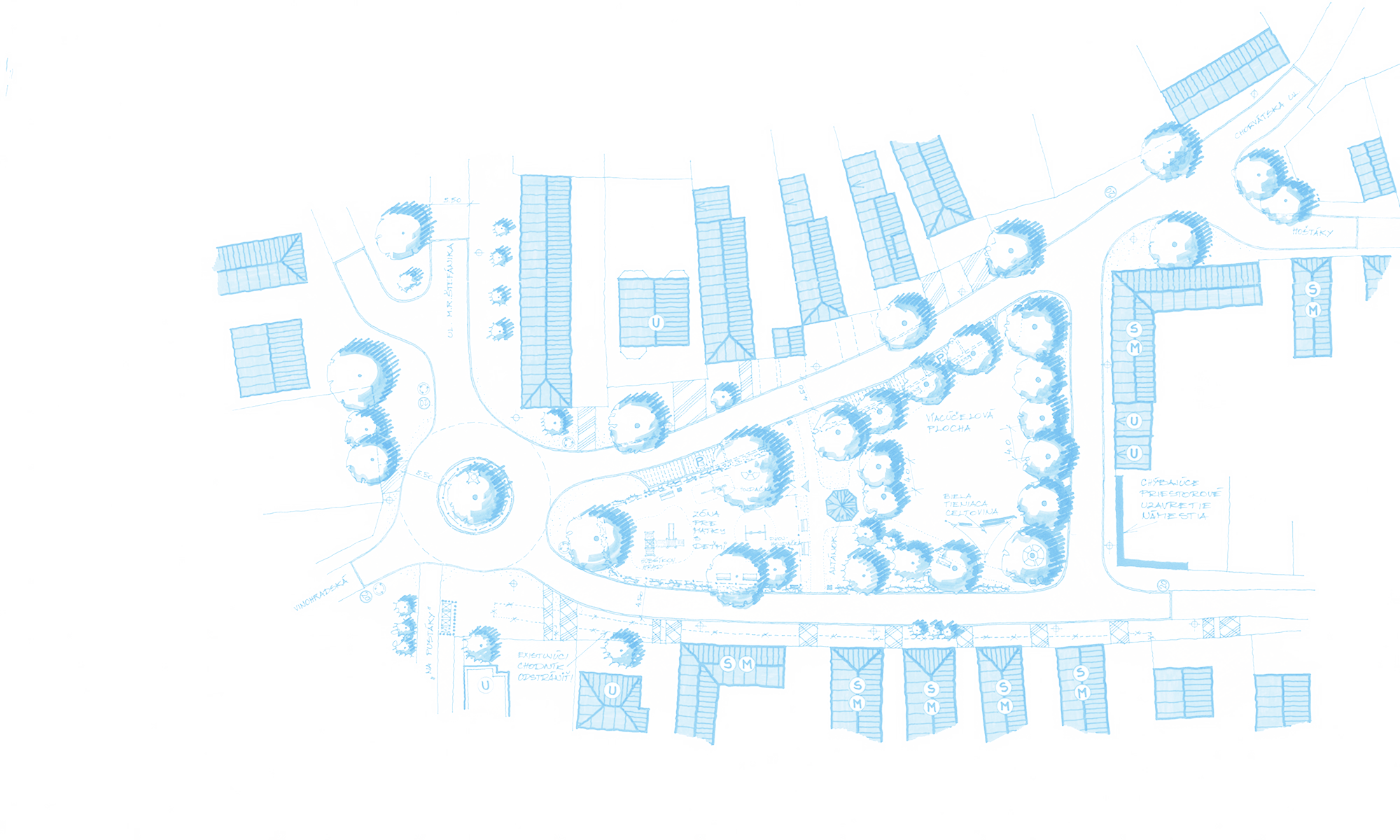Roughly in the middle of Obchodna street, there is a node of increased activities. The node is created naturally by the intersection of Obchodna street with Postova street. This node stretches the pedestrian zone in a perpendicular way, adding another dimension to the public space. Feeding substantial part of pedestrians from the transport hub at Hodzovo square, the intersection creates an open plaza in front of the Crowne Plaza hotel. Just in the middle of this unnamed plaza, one can find a block of shops. These temporary vendor stands are of a poor technical and aesthetical quality and are considered for a replacement in the project by Jan Tichy, Weronika Dams, and Helga Kovacs.
Jan Tichy writes about the various interests in public space that should be taken into account throughout the design process.
The objective of this part is to dispose of the poorly designed temporary structures and substitute them with a more permanent design of higher architectural quality. Should be noted that the design process of such relatively small structure might, in fact, be more demanding that the design process of a larger structure. There are several points to embrace during the design process and incorporate into the final structures. These points aim to fulfill the interests of various groups using the public space. We can talk about three basic groups of interest, namely private, local and public interest. The general explanation of the groups is further explained in this article. A high-quality project of the street refurbishment shall incorporate and fulfill all of the groups to a maximal extent.
As the first interest, a private one, we can name the interests of individual vendors and merchants using the structures in question. Because the tenants are the very reason for the existence of the structures, their interests and requests shall be kept in mind during the whole design process. Taking the kind of businesses present into account, there is actually no need to invite the tenants into the design process to any larger extent. This is due to two basic reasons. The first reason being the universal, nonspecific kind of businesses present. Newsstands and fast food stands have relatively non-existent demands for specific equipment and design. As for the more pragmatic second reason, the turnaround time of the tenants is rather short and frequent changes shall be expected. In regard to both of the reasons, the design should embrace the needs of the kind of business present but does not necessarily have to take the specific vendors into account.
For the second interest, a local one, we can talk about the aesthetic value of the future structures. It is difficult to tell objective criteria for an aesthetically valuable structure. This is further embraced by the fact, that there is no existing contemporary style used for the majority of buildings in the area and in the world. The style is architect based rather than area and culture based. Nevertheless, a nice architecture is something very subjective and should be understood as such. Even an interesting and architecturally valuable building is a wrong option, should it not be accepted by the populace. The general rule of thumb for an architect of public space and the structures in it shall be a rather moderate and conservative approach, which will keep up with time.
The third interest we can talk about is the public interest. There is no definition of public interest and it is, in fact, so-called indefinite legal concept, similar to terms as justice, good morals etc. So what should be considered as a design which is in public interest? For this case, we can define relatively easy a specific criterion. The public interest in regard to the substitution of the named structures in a sustainable design of the replacement buildings. As broad term as it is, the common definition of sustainable development is the fulfillment of the three main pillars, being social, environmental and economical.
The requirements for the sustainable design of a building will be described in the next article. Keep tuned!
